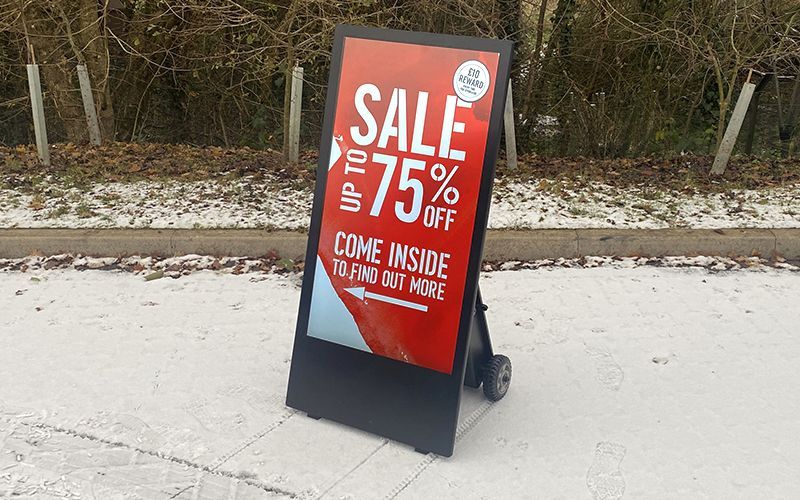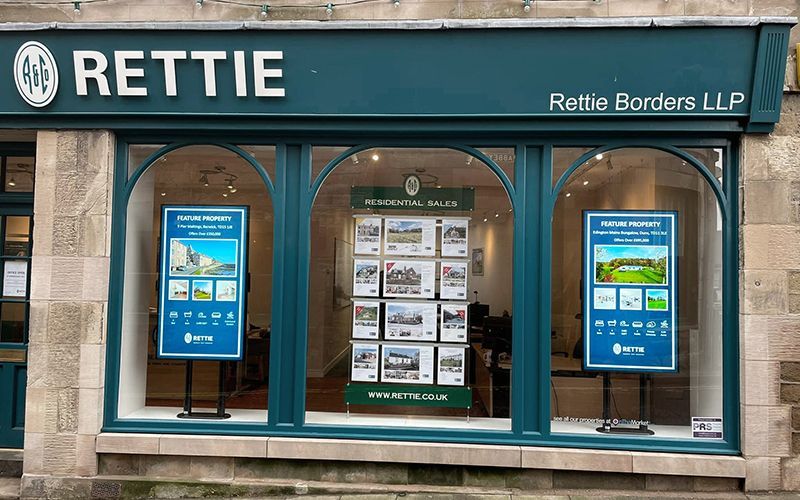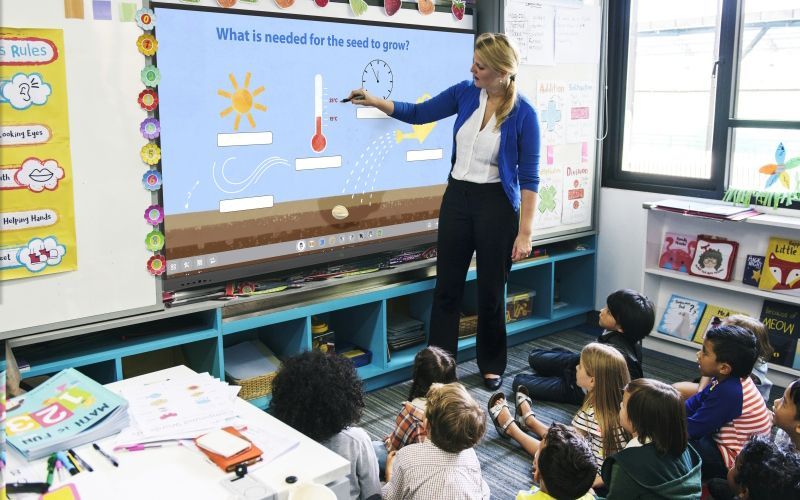Digital Wayfinding: How to help visitors navigate your space
First impressions matter, and nothing creates a negative impression faster than confused visitors unable to find where they need to go. Whether you operate a hospital, university campus, shopping centre, corporate office, or any large facility, helping people navigate your space efficiently is crucial for creating positive experiences.
Traditional wayfinding methods, static signs and printed directories, have limitations that digital technology can overcome. At TNF Digital Signage, we've seen how digital wayfinding solutions transform visitor experiences across diverse sectors. Here's how digital wayfinding works, who benefits from it, and why it's becoming essential for modern facilities.
What is Digital Wayfinding?
Digital wayfinding uses electronic displays to help people navigate complex environments. Unlike static directional signs that point in fixed directions, digital wayfinding provides dynamic, interactive information that can be updated instantly and customised to individual needs.
Digital wayfinding solutions range from simple directional displays showing building layouts and department locations to sophisticated interactive touch screens that allow visitors to search for specific destinations, plan routes, and even receive printed or mobile directions.
The key advantage of digital wayfinding is flexibility. As your facility changes, departments relocate, or events occur, your wayfinding system adapts instantly without the cost and delay of replacing physical signage.

Who needs Digital Wayfinding?
Any organisation with a large or complex space where visitors need guidance can benefit from digital wayfinding:
Healthcare Facilities - Hospitals, medical centres, and clinics can be stressful environments where patients and visitors are often anxious. When someone is worried about a loved one or nervous about an appointment, the last thing they need is confusion about where to go. Digital wayfinding reduces stress by providing clear, easy-to-follow directions to departments, wards, clinics, and facilities.
Educational Institutions - Universities, colleges, and large school campuses host thousands of students, staff, and visitors who need to navigate between buildings, lecture halls, administrative offices, and facilities. During open days, parents and prospective students particularly benefit from clear wayfinding that helps them explore independently.
Shopping Centres and Retail - Large shopping centres with multiple floors and hundreds of stores can overwhelm visitors. Digital wayfinding helps shoppers find specific stores, facilities, and services quickly. When people can find what they're looking for easily, they spend more time shopping and less time frustrated, directly impacting dwell time and sales.
Corporate Campuses - Companies with large office complexes, multiple buildings, or frequent visitors benefit from digital wayfinding that guides guests to meetings, interviews, or deliveries efficiently. This creates a professional impression and reduces the burden on reception staff.
Transport Hubs - Airports, train stations, and bus terminals rely on clear wayfinding to help travelers navigate to platforms, gates, facilities, and services, particularly when running late or in unfamiliar surroundings.
Hotels and Hospitality - Conference hotels, resorts, and large hospitality venues use digital wayfinding to help guests find event spaces, restaurants, facilities, and services across sprawling properties.
Museums and Attractions - Cultural institutions with multiple galleries, exhibitions, or buildings benefit from wayfinding that helps visitors plan their visit and explore without getting lost.
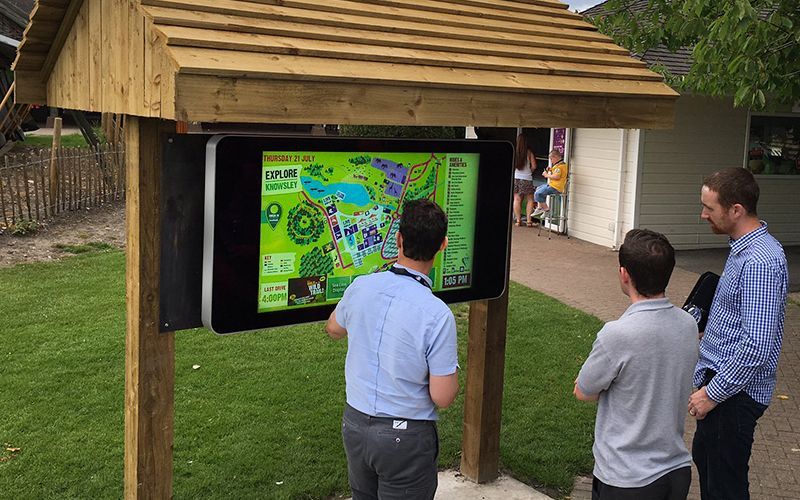
The benefits of Digital Wayfinding
Digital wayfinding delivers measurable benefits that improve operations and enhance visitor satisfaction:
Reduced Stress and Confusion - Clear, visual directions reduce anxiety, particularly in healthcare settings where patients may already be stressed. Research shows that 47% of customers say engaging digital signage improves their overall experience, and this is especially true for wayfinding applications.
Decreased Staff Interruptions - When visitors can find their way independently, reception staff and employees spend less time giving directions and more time on their primary responsibilities. In healthcare, this means clinical staff can focus on patient care rather than repeatedly answering location questions.
Improved Accessibility - Digital wayfinding can provide information in multiple languages, include accessibility features for visitors with disabilities, and offer options for those with mobility limitations. Interactive screens can show wheelchair-accessible routes or locate accessible facilities.
Real-Time Updates - When areas are temporarily closed, events are happening, or rooms change function, digital wayfinding can be updated instantly. No need to put up temporary signs or redirect confused visitors manually; the system reflects current information.
Enhanced Visitor Experience - When people can navigate confidently and find what they need quickly, their overall experience improves dramatically. In retail environments, this translates to increased dwell time and sales. In healthcare, it means better patient satisfaction scores. In education, it creates a welcoming environment for prospective students.
Types of Digital Wayfinding solutions
Digital wayfinding comes in various forms to suit different needs and budgets:
Static Digital Directories - Screen-based directories display building maps, floor plans, and department locations. While not interactive, they're clearer and more engaging than traditional printed directories and can be updated remotely as your facility changes.
Interactive Touch Screens - These allow visitors to search for specific destinations, explore maps, and zoom in on areas of interest. Users can input where they want to go and receive clear directions, often with the ability to print or send directions to their mobile device.
Directional Displays - Positioned at decision points throughout your facility, these screens show arrows and directions to guide people along their route. They can be updated based on time of day, events, or temporary changes.
QR Code Integration - Combine physical signs with QR codes that link to mobile wayfinding apps or directions, allowing visitors to navigate using their smartphones.
Implementing Digital Wayfinding effectively
Successful digital wayfinding requires thoughtful planning and implementation:
Strategic Placement - Position wayfinding displays at key decision points: building entrances, elevator lobbies, corridor intersections, and near reception areas. Think about where visitors naturally pause to orient themselves.
Clear, Simple Design - Wayfinding should be intuitive. Use clear maps, consistent colour coding, recognisable icons, and simple language. The goal is to reduce confusion, not create more complexity.
Keep Information Current - The advantage of digital wayfinding is the ability to update instantly. Establish processes to ensure information remains accurate as departments move, rooms change function, or temporary events occur.
Consider Your Audience - Design your wayfinding with your primary users in mind. Healthcare wayfinding should account for elderly patients who may struggle with complex interfaces. Retail wayfinding might incorporate promotional content. Educational wayfinding needs to work for visitors unfamiliar with the campus.
Integrate with Existing Systems - Where possible, connect your wayfinding system with existing databases, room booking systems, or event calendars to automate updates and ensure accuracy.
Provide Multiple Options - Some people prefer interactive exploration, while others want quick visual references. Offering both interactive screens in key locations and static directional displays at decision points serves different preferences.
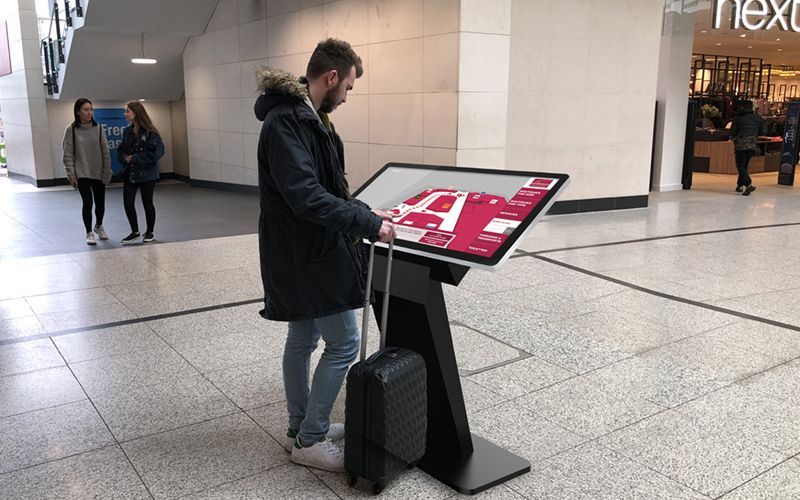
Digital Wayfinding across sectors
Different sectors leverage digital wayfinding in unique ways:
In Healthcare - Hospitals use digital wayfinding to direct patients to departments, display waiting times, show clinic schedules, and provide health information while people navigate. Interactive screens at entrances help visitors find specific wards or clinics, reducing the stress of medical visits.
In Education - Universities implement campus-wide wayfinding systems helping students find lecture halls, offices, and facilities across multiple buildings. During open days, interactive screens allow prospective students and parents to explore independently, creating a positive impression.
In Retail - Shopping centres use wayfinding to help visitors locate stores, facilities, exits, and parking. Smart systems can highlight special offers, direct shoppers to sale events, or promote specific retailers, creating additional revenue opportunities.
In Corporate Environments - Office complexes use wayfinding to guide visitors to meetings, deliveries to correct departments, and employees to facilities or other buildings on campus. This professional approach reflects well on company culture.
The technology behind Digital Wayfinding
TNF Digital Signage provides comprehensive wayfinding solutions built on reliable technology:
High-Quality Interactive Displays - Our touchscreen displays use PCAP (Projected Capacitive) technology for responsive, accurate touch interaction. Available in various sizes to suit your space, from compact kiosks to large-format displays.
Non-Interactive Digital Displays - For budget-conscious implementations or locations where interaction isn't necessary, our standard digital displays provide clear, attractive wayfinding information that updates remotely.
Content Management System - Our CMS allows you to manage all wayfinding content from one central location. Update maps, change directions, add temporary notices, or schedule content across all your wayfinding displays.
Professional Installation - We ensure your wayfinding displays are positioned optimally, securely mounted, and properly configured. Our team works around your schedule to minimise disruption to your operations.
Custom Content Creation - We can
create professional wayfinding content, including building maps, floor plans, directional graphics, and interfaces designed specifically for your facility and audience.
Why organisations choose TNF Digital Signage for Wayfinding
With experience across healthcare, education, retail, and corporate sectors, TNF Digital Signage understands the unique wayfinding challenges different facilities face:
- Interactive and non-interactive display options
- Scalable solutions from single displays to campus-wide networks
- User-friendly content management for easy updates
- Professional installation and ongoing support
- Custom content creation tailored to your facility
- Integration capabilities with existing systems
Good wayfinding is invisible. When done well, visitors navigate effortlessly without conscious thought. Poor wayfinding causes frustration, wastes time, and creates negative impressions that can impact your organization's reputation.
Digital wayfinding ensures your visitors, patients, students, customers, or guests can navigate your space confidently, creating positive experiences that reflect well on your organisation.
Transform your visitor experience today
Whether you operate a healthcare facility, educational campus, retail environment, corporate office, or any large complex space, digital wayfinding offers a proven solution to navigation challenges.
At TNF Digital Signage, we're passionate about helping organisations create better visitor experiences through effective wayfinding solutions. Our systems are designed to be intuitive for users and simple to manage for your team.
Ready to implement digital wayfinding in your facility? Contact us today to discuss how our wayfinding solutions can transform your visitor experience. Visit our wayfinding digital signage page to learn more about sector-specific solutions, or explore our interactive display options to see the technology that powers effective wayfinding.

